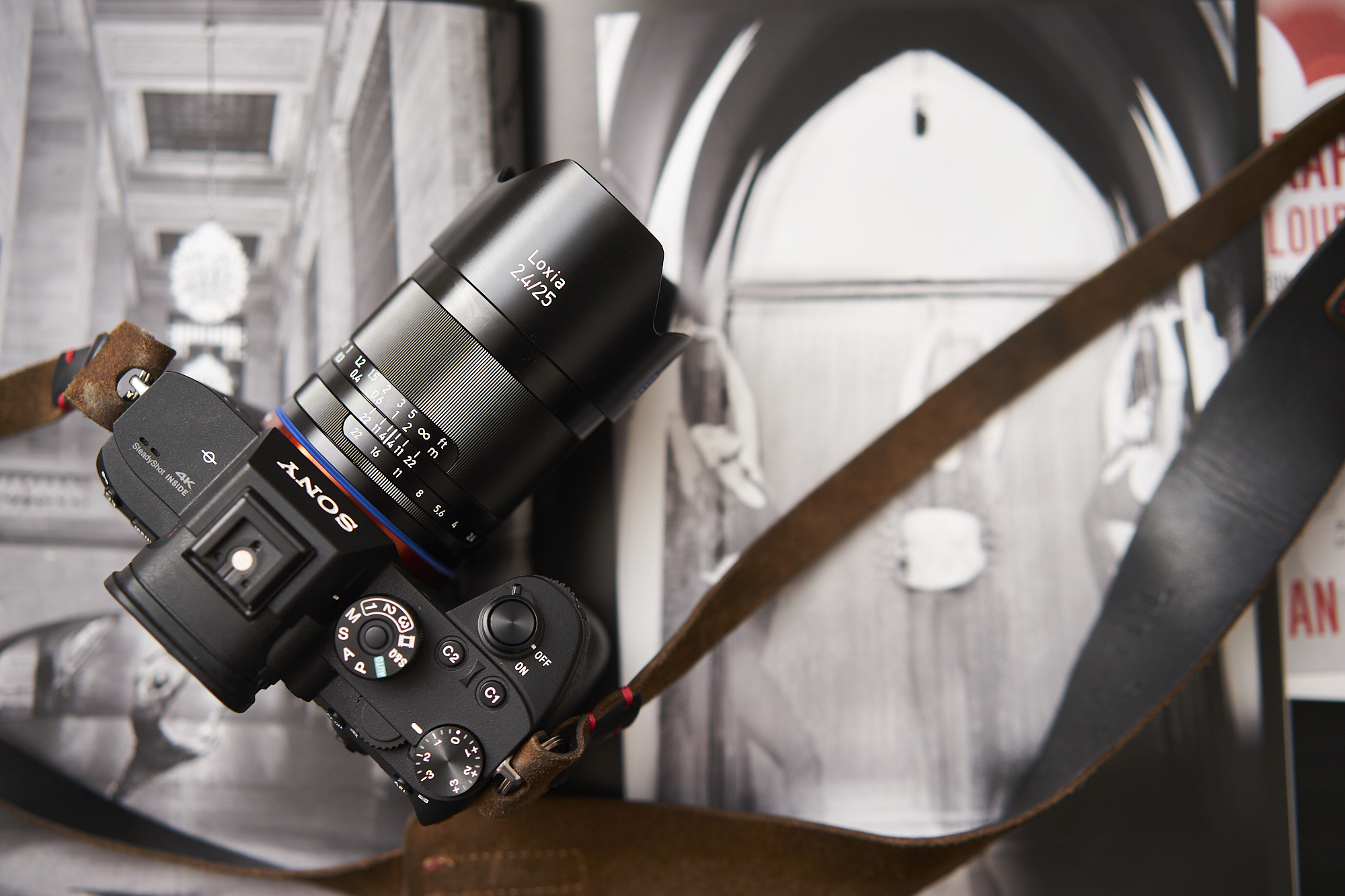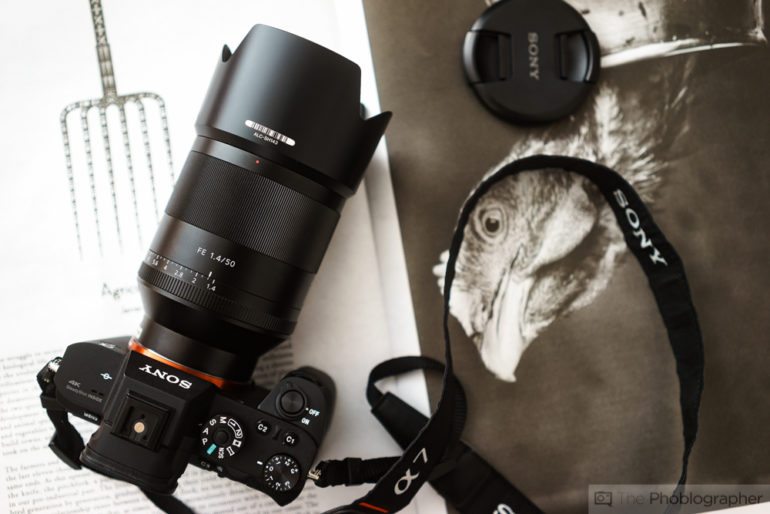Last Updated on 06/20/2023 by Lara Carretero
Zeiss, founded in 1846, is a company specializing in optics but only entered the photography industry in 1896 with the invention of the Planar lens. For much of photography’s history, they’ve been revered — even during the split of Germany post-World War II. Their lenses graced the Hasselblad cameras that journeyed into space to shoot famous images like the Blue Marble. In the digital photography world, they became known as a gold standard for optical excellence. They seemed nearly untouchable in 2013 with the launch of the Otus lineup until Sigma achieved almost comparable image quality not too long afterward, along with autofocus. Those lenses do well on film-camera today. In the mirrorless camera world, it feels as if they become synonymous with a quiet elderly family member left in an assisted living facility just wanting to leave the earth with dignity. Such was the case until an article stirred their attention.
Table of Contents
Photographers Have Trusted Zeiss
Over the years, the Phoblographer has worked to help photographers connect the technical and artistic sides of their brains and assist in translating the two languages. After all, science and art aren’t enemies; those with MBAs are the corruptors. To that end, we’ve asked several photographers about the gear they use to make the images that they create. Many have trusted Zeiss over the years. Here’s a list of a bunch that we’ve interview:
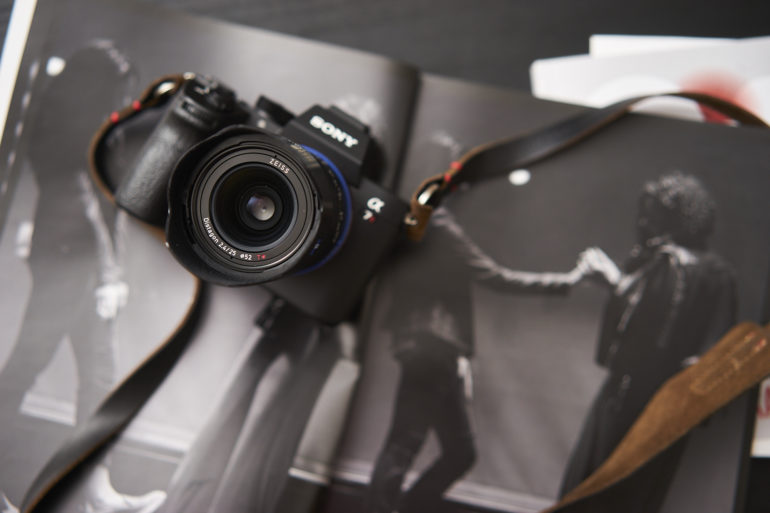
- Greg Watermann used their optics to make beautiful cosplay photos.
- Ghebosu Florin Emil used the lenses to help him in his efforts to make images worthy of Magnum.
- Jaimie Milner used their lenses to tell the stories of Black men.
- Tim Booth uses the lenses to make his conceptual, magical photos.
- Miguel Raimundo uses vintage Zeiss lenses on medium-format cameras.
- Carter Baran uses the Sony Zeiss variant lenses to make incredibly colorful photos.
- Sandeep Mv is a Sony Artisan that used Sony Zeiss lenses to make great photos.
- Zayira Ray makes important portraits
- Sofia Monzerratt uses vintage Zeiss lenses to create her unique photos.
- Dane Shitagi uses the Zeiss Otus 55mm to make great photos of ballet dancers.
Quite literally, the Phoblographer’s archives have at least six pages of articles that specifically include interviews with photographers who use Zeiss lenses. We’ve been an active website for around 14 years as of the publication of this article, but many photographers have trusted Zeiss over the years, even before us.
Greg Watermann, who is a Zeiss Ambassador, told us the following in 2016 when we interviewed him:
The Milvus 135 is truly an amazing lens and it’s my favorite for shooting outside. Of course I love my Otus 85mm for portraits. But it’s bokeh is nothing compared to the 135, which does a wonderful job of separating the subject from the background, even when shooting full-length.
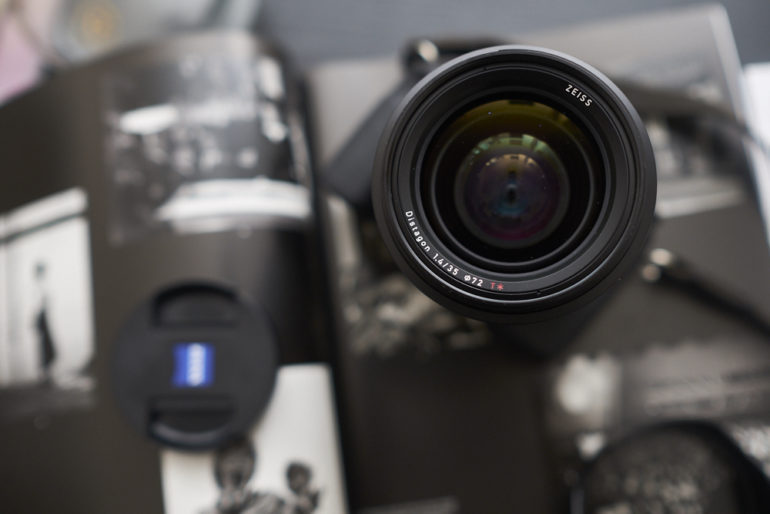
Indeed, photographers have made compelling images with their lenses over the years. While they’ve never enjoyed the mass market appeal that Canon, Nikon, and Sony have delivered to many photographers, the brand has been very popular with cinema, where budgets are far larger.
In recent years, Zeiss has seemingly slipped away from the photography industry — at least when it comes to dedicated cameras capable of fine photography production capabilities. As Zeiss tells us, though, that’s not the case.
Is Zeiss Really Gone?
We’ve understood that Zeiss hasn’t had a standing press relationship with much of the photographic press in many years. To that end, the mothership contacted us to clear any reports about the company exiting the photo industry. After we received a tip from the Fred Miranda forums, we decided to write an article formulated from that and much of the information that we had received over the years from Zeiss and former Zeiss employees. But Joachim Kuss, Head of Communications for the ZEISS Consumer Markets Segment, contacted us from Germany along with Marisa Weis, Head of Category Management Imaging and Brand Partnerships at ZEISS.
They both tell us that Zeiss is not leaving the photo industry. Further, they acknowledge that there are doubts about the company within the photo industry.
“First, ZEISS is not leaving the photo lens market,” Joachim explains when we ask about what the company is doing for photographers, specifically not using their smartphones. “While we understand that the photographic community has questions we need to answer, we do not see the benefit of spreading rumors. We cannot speak for independent dealers or why anyone would be interested in spreading such a rumor.” He continued to explain that they’re a team of passionate photographers, videographers, and cine enthusiasts who work to develop and deliver products for imaging.
“When we say we are committed to the category and to enabling consumers around the world to take stunning photos and videos with our products, we mean it.”
Joachim Kuss
“Zeiss has done some collaborations with smartphone makers over the years. One of them happens to be Sony. To that end, Joachim reasons that high-end photographers use both types of cameras. “In our experience, ambitious and professional photographers use both cameras with interchangeable lenses and their smartphones as a matter of course,” he tells us. This, of course, makes us wonder about what Zeiss is doing specifically for photographers who do not use their cell phones to shoot photos. A “ter all, Zeiss hasn’t announced something for this market segment since the pandemic.
“We offer a portfolio of lenses for different types of cameras,” Joachim responds. “Zeiss has been involved in photography and cinematography for more than “30 years and in mobile imaging for more than 20 years.” He states that what sets them apart from various other brands is the Zeiss Look, their bokeh, precision without compromises in the name of performance,
“We work with partners such as Sony and continue to offer products.”
Joachim Kuss
When asked about their supply chain, Joachim did not confirm that Zeiss works with Cosina in Japan — citing that this is for competitive reasons.
So what do the many photographers who’ve purchased Zeiss products and have experienced problems do? Earlier this year, we updated our entire database of Zeiss Loxia lens reviews because we had uncovered a common problem. When you try to connect your lens to a Sony camera, it might inadvertently change the aperture even when you’re not touching the camera. The issue is well documented on DPReview, Reddit, and Fred Miranda forum posts. However, according to the customers in those posts, they haven’t received any support from Zeiss.
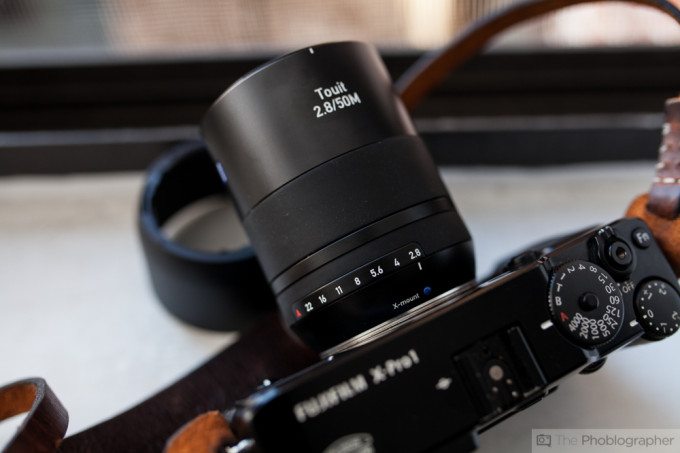
“We provide service and firmware updates for our products, also beyond the warranty period,” stated Joachim. “There are no restrictions on the products we offer.” However, that was a shorter response to our far longer question. We asked Zeiss about repairs and services to existing products or firmware updates. Zeiss’s answer, however, did not instill faith in us for future customer support considering their history and current actions. Despite this, Zeiss continues to offer holiday discounts on their existing product line — selling products that no longer have a record of support on public forums.
With this said, we pressed to see if new lenses are coming from Zeiss for photographers. “ZEISS is and has always been focused on meaningful innovation,” Joachim told us. “We are constantly checking opportunities for further products with market potential but cannot share future plans due to confidentiality reasons.” This answer surely wouldn’t instill faith in photographers. It left us with the same lack of confidence that they’d ever bring back the Contax T2 or if Sony would ever revive the Minolta name.
How do Photographers Feel?
As a Zeiss customer holding onto only a single lens now, I don’t feel very enlivened by the responses we received. If my product needed it, I’d need to send it to some other 3rd party engineer to get fixes done. This would be much easier if the product were fully analog, depending on the concern. But I feel there is far more concern if the product has electronics. There was a time in photography history when lenses were supposed to far outlast the life of your camera. But part of what manufacturers told us in 2014 seems to be coming true in that lenses aren’t designed to last anywhere as long anymore.
Realistically speaking, Zeiss photographers who use the Milvus or Otus lineup on film cameras probably won’t have any issues with their products until they break. We surveyed photographers we’ve interviewed and several others who enjoy a successful career to see their thoughts.
“I dabbled with a few Zeiss lenses over the years, but I found some of their pricing questionable,” says photographer Ian Pettigrew, who is well known for his projects to help those with Cystic Fibrosis. “Like for the Otis series, that was verging on Leica pricing for a manual lens. Never anything wrong with the quality.” Ian continued to state that he switched when Sigma started to hit its stride, making comparable lens quality for much less money. These days he shoots with the Leica SL2-s.
On the side, Ian shared with us that he sometimes shot with Voigtlander and finds them far more affordable. Voigtlander has been known to use Cosina — the same company that is reportedly making lenses for Zeiss.
Ian isn’t the only one who doesn’t have much faith. In fact, the well-respected Roger Cicala states that he’s “…surprised that people are surprised.”
Roger reasons that Zeiss’s responses to us are essentially them not commenting on anything while making it seem like they’re saying more. Further, it makes sense that Zeiss, a company in transition in an industry in transition, does not have a clear plan going forward.
The camera lens production area is barely recognizable from what it was a decade ago. From my point of view, Zeiss dipped a toe into making lenses for Canon and Nikon mount cameras, licensed some things in partnership with Sony, and has been emphasizing Cine for the last 6-7 years. I wouldn’t find it surprising that the photography areas are no longer profitable, in fact, I’d be surprised if they were. Zeiss has never really had a US-based service center; like many other manufacturers, they do a lot of ‘in-kind replacement in lieu of repair,’ outsource a bit, and do the more expensive lenses back in Germany.
Roger Cicala
Photographer Patrick Murphy-Racey had similar sentiments. “Back in 1985, when I got my start as a working pro shooter if you owned a Zeiss lens, you were serious about your work,” he stated. “It was widely known that Leica, Contax, Zeiss, and Hasselblad were the clear leaders at producing top-shelf optics whether you were shooting stills or making movies. When Sony partnered with Zeiss to produce many of their earliest lenses, I was impressed as an early adopter of their E-mount system.” Patrick was impressed by the Batis lineup, as it gave him lots of hope. However, he was disappointed when the appropriate firmware didn’t appear.
“That was eight years ago, which in Sony years is about 35 years.”
Patrick Murphy-Racey
These days, Patrick wonders about Zeiss. In fact, he finds it moot as to whether or not they’re still in the camera and lens business. “The whole discussion about the state of Zeiss at this point appears to be more of a PR conversation, especially when the first lenses they present to the world on their website are inside of phones,” he feels. “That seems to be more the lead of the story, rather than if they are still in the photo lens business.” If you’ve been a working professional photographer for as long as Patrick has been, it’s easy to lose faith.
We didn’t only reach out to photographers, however. William Brawley, the former Editor in Chief of Imaging Resource, provided feedback that’s more or less in line with what everyone else said. He shares that it’s challenging to see where they’d be in the market.
“I can’t say I’m filled with much confidence either as to where Zeiss’s future lies within the photography industry (that is, the still-camera photography industry),” he states. “…And we also continue to see Zeiss branding on new Sony digital cameras, such as the newer ZV-1 fixed-lens ‘vlogging’ camera. However, for standalone ‘ZEISS-branded’ lenses, things definitely feel much more stagnant.” William found it fascinating that we haven’t seen any new Zeiss-branded lenses since the pandemic — nor can he even remember the last time he tested one that didn’t have the Sony moniker.
As a fellow journalist that has tested various lenses and cameras over his career, William finds it fascinating that Sony made lenses directly competitive with the existing Sony-Zeiss E-mount products. Specifically, he references the company’s newer 35mm f1.4 and 50mm f1.4 G Master primes. “Sony maintains that these GM lenses aren’t replacing their Zeiss-branded version, but I can’t help but wonder how that strains the relationship with Zeiss, at least in the interchangeable lens department,” he states. “Zeiss lenses are (were) expensive lenses, premium lenses, and ones marketed towards the more advanced, or professional, photographer, and here is Sony coming in with first-party alternatives.” Further, William finds it will probably be tough for them to keep working with Canon, Nikon, and Fujifilm. He especially finds this to be the case with Sigma and Tamron seeing success.
William finally notes the discontinuation of the Zeiss ZX1 — which seemed like a really cool camera. However, he was disappointed with the underwhelming reviews from trusted sources.
We pinged several other photographers who didn’t get back to us in time for the publishing of this article. Considering what we’ve found, it doesn’t seem like photographers are very happy with the company. We often compare the photo industry to the smartwatch world. Apple captured most of the smart watch category and doesn’t work to try to uplift the other brands. But the photo industry often prop each other up behind the scenes while posturing to the public why they’re better than their competition. For the photography industry to evolve, cannibalization will need to happen as several brands just can’t compete without help.
Editor’s Note: William Brawley, the former Editor in Chief of Imaging Resource, is actively seeking work. And we highly recommend working with a journalist of his ethical standing and talent.


